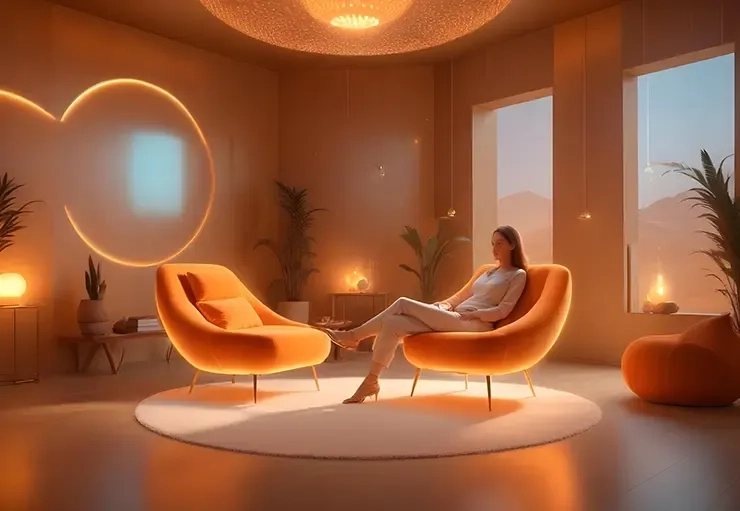
How to Create a Space That Works for You: The Psychology of Interior Design
When it comes to interior design, most people think about colors, furniture, and aesthetics. But here’s the kicker: your space does way more than just look good. It influences how you feel, how productive you are, and even your mental health. Welcome to the fascinating world of psychology in interior design—where the spaces you inhabit don’t just fill a room but actively work for you.
If you want your home or office to truly support your goals and well-being, it’s not enough to slap on some trendy wallpaper or buy an expensive couch. You need to understand how design impacts the human psyche and craft your environment intentionally. And yes, that’s science-backed, not just interior designer fluff.
Why Psychology Matters in Interior Design
Your brain is wired to respond to its surroundings in ways you might not consciously realize. Colors can evoke calm or energy, lighting affects mood and focus, and spatial arrangement impacts your sense of control and comfort. A cluttered or poorly designed space can raise stress hormones and tank your productivity. Conversely, a well-designed environment can boost creativity, improve mental clarity, and enhance emotional balance.
So, designing a space “that works for you” means aligning your interior with how you think and feel, not just what looks Instagram-worthy.
Step 1: Understand Your Space and Its Purpose
Before picking paint swatches or furniture, get brutally honest about what you actually need. Is your space a home office, a family room, or a sanctuary for relaxation? Each function demands a different psychological approach:
Workspaces should promote focus, reduce distractions, and inspire creativity.
Living rooms should foster connection and relaxation.
Bedrooms need to be restful and calming, signaling your brain it’s time to shut down.
If you’re redesigning your space, check out trusted professionals like Lellex Construction who specialize in creating interiors tailored to your lifestyle and needs, blending function with form seamlessly.
Step 2: Leverage Color Psychology Wisely
Colors are not just decoration—they speak directly to your emotions. Here’s a quick cheat sheet:
Blue: Calming, boosts focus, great for offices or bedrooms.
Green: Refreshing and balancing, perfect for living rooms or any space where you want to feel grounded.
Yellow: Energizing and optimistic, but use sparingly—too much can be overwhelming.
Red: Stimulating and attention-grabbing, better suited for social spaces than bedrooms.
Neutral tones: Provide stability and calm, essential as a base to prevent sensory overload.
Don’t just pick colors because they’re trendy. Choose shades that support your mental state and the function of your room.
Step 3: Light It Right — The Often Ignored Hero
Natural light is your best friend for mental health and productivity. It regulates your circadian rhythm, helps you feel awake, and lifts your mood. If your space lacks windows, invest in full-spectrum lighting that mimics daylight.
Avoid harsh overhead fluorescents; instead, layer your lighting with task lights, ambient lamps, and accent lighting to create a flexible environment that adjusts with your needs.
Step 4: Declutter to De-stress
Clutter isn’t just an eyesore—it’s a psychological drain. Mess signals your brain that your environment is chaotic, leading to increased cortisol levels (hello, stress!). A clean, organized space promotes a sense of control and calm.
Create smart storage solutions that keep your essentials accessible but out of sight. Minimalism isn’t about having nothing; it’s about having what matters in a way that supports your mental clarity.
Step 5: Arrange for Flow and Function
Ever walked into a room and felt instantly uncomfortable? Often, it’s about spatial arrangement. Psychology suggests that open pathways, balanced furniture placement, and accessible layouts make a space feel more welcoming and less claustrophobic.
Consider how you move through the room. Avoid blocking windows or doorways, and create “zones” within larger spaces to support different activities (working, relaxing, socializing). Feng shui isn’t just superstition; it’s an ancient framework for spatial harmony that modern psychology echoes.
Step 6: Add Personal Touches with Purpose
Personal items—artwork, photos, meaningful objects—can ground your space in identity and comfort. But be selective; too much clutter defeats the purpose. Choose pieces that inspire you or soothe you emotionally.
Plants also play a huge role. They improve air quality and introduce a calming biophilic element, connecting your space with nature and reducing anxiety.
Wrapping Up: Your Space Should Serve You, Not the Other Way Around
Creating a space that “works” for you is about more than looks—it’s about tapping into the psychology of design to enhance your mental and emotional well-being. From color to light, clutter to layout, every element influences how you feel and perform.
If you want a home or workspace that’s tailored to your needs and designed with expert care, consider partnering with professionals like Lellex Construction. They combine technical skill with a deep understanding of how spaces impact lives, making sure your environment truly works for you.



